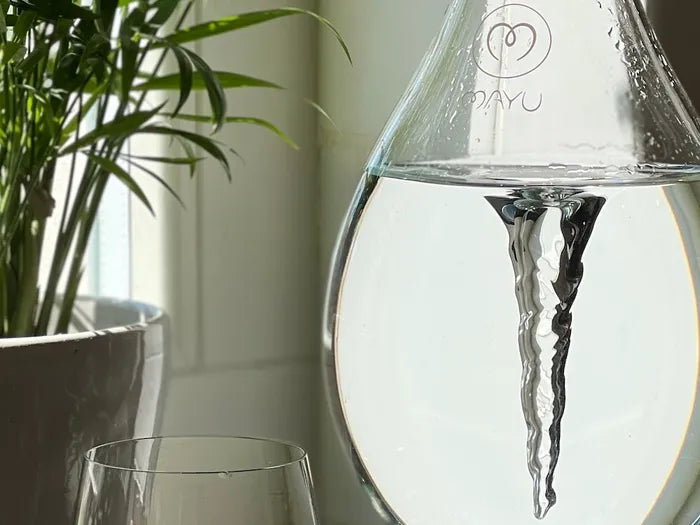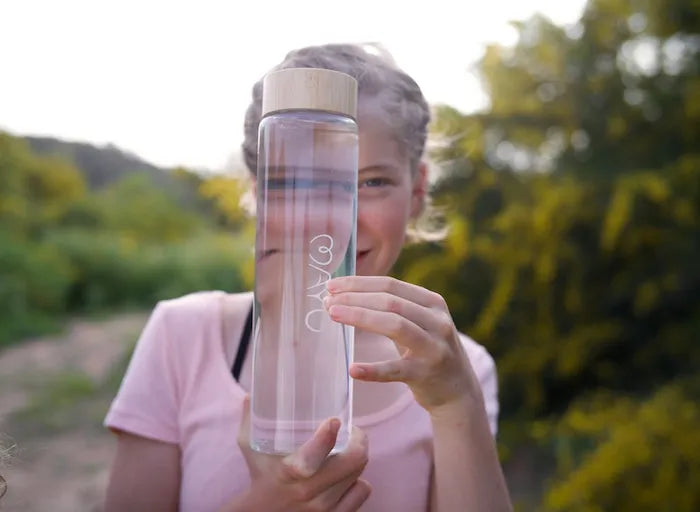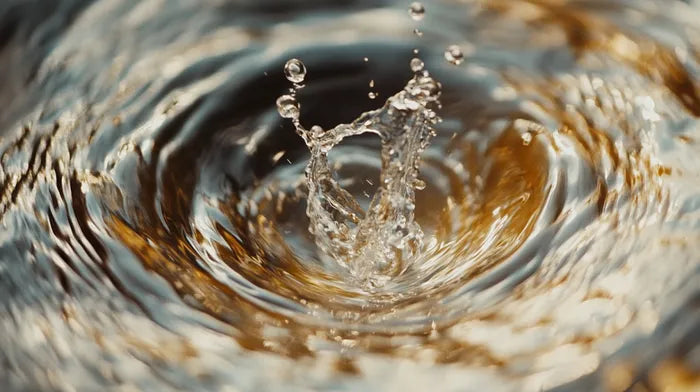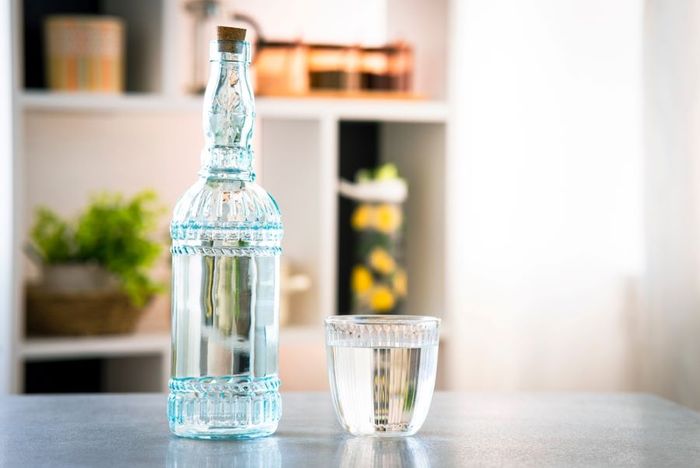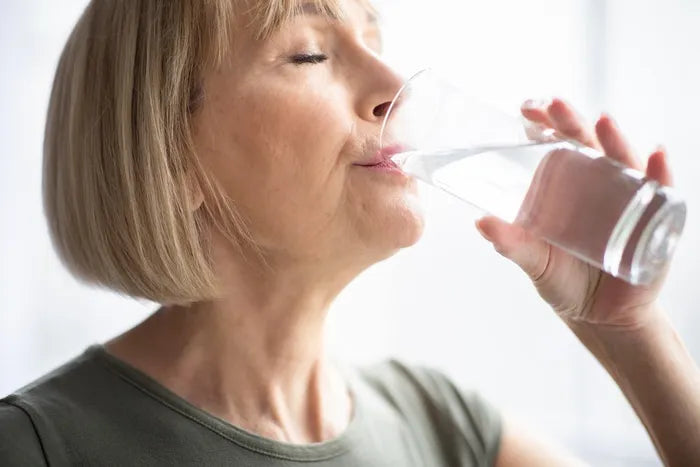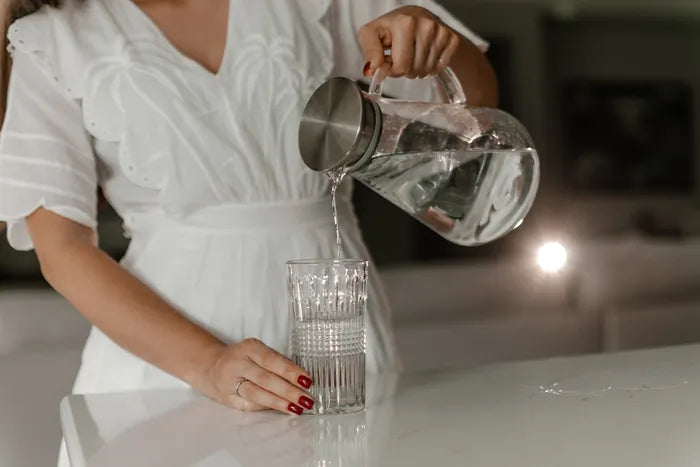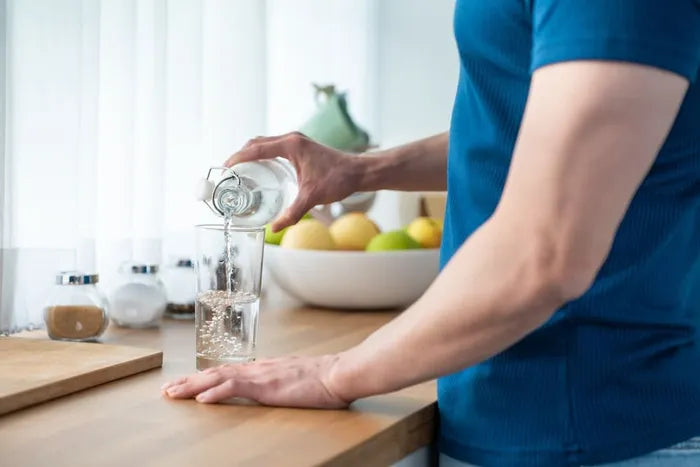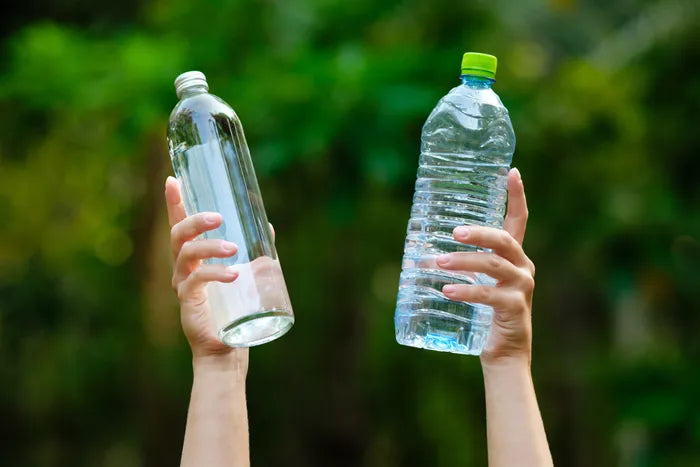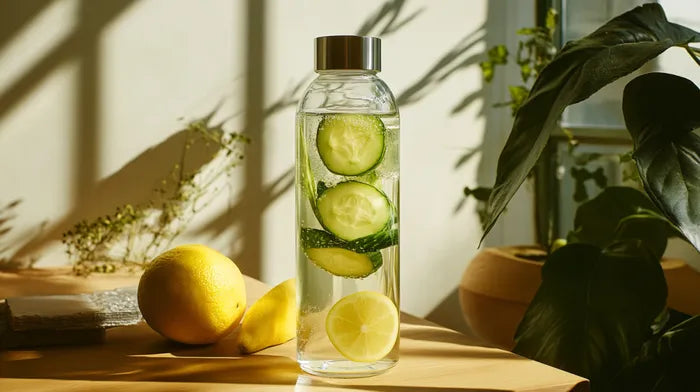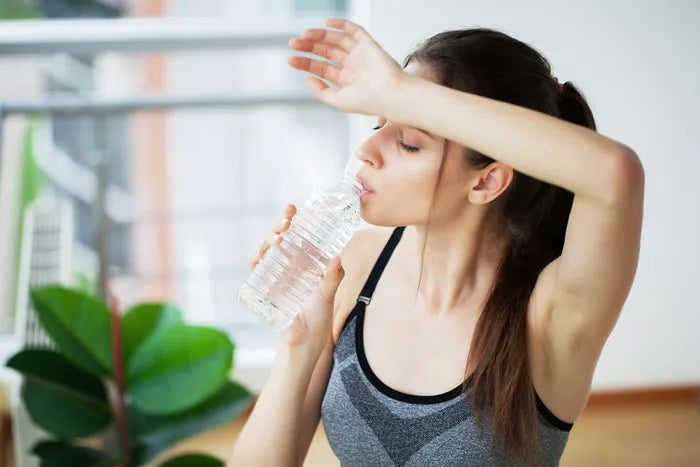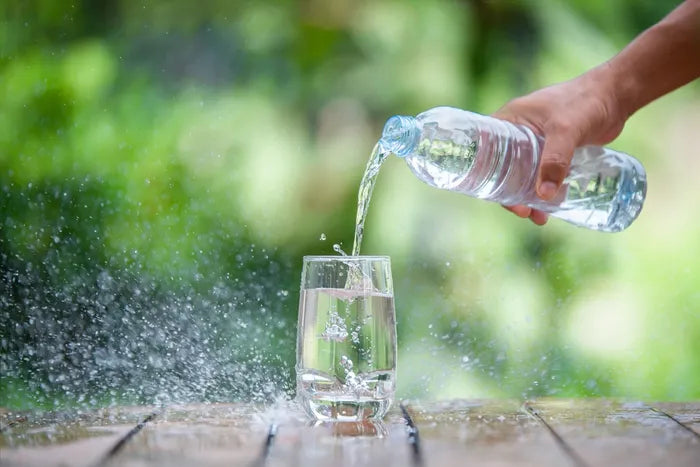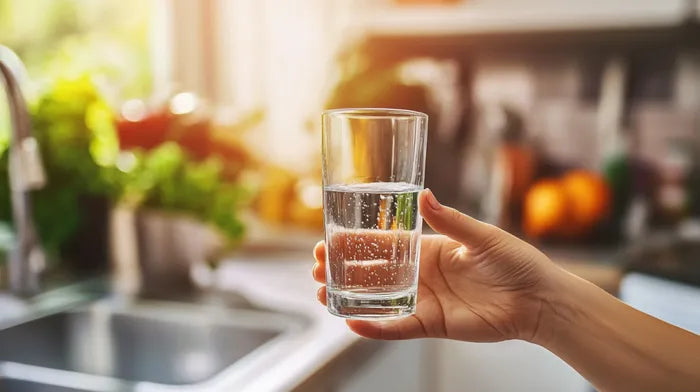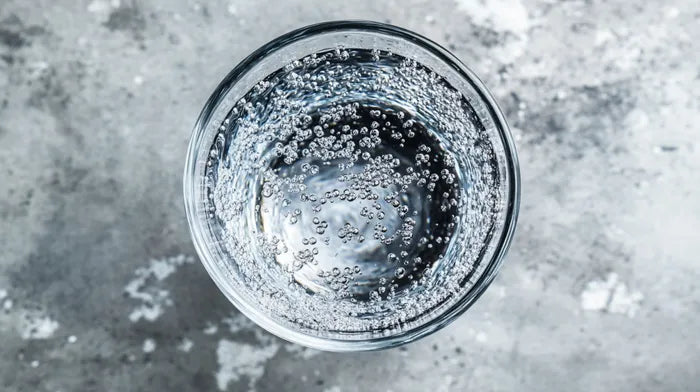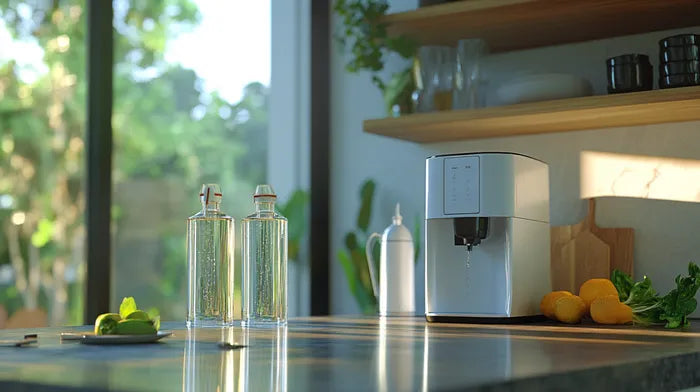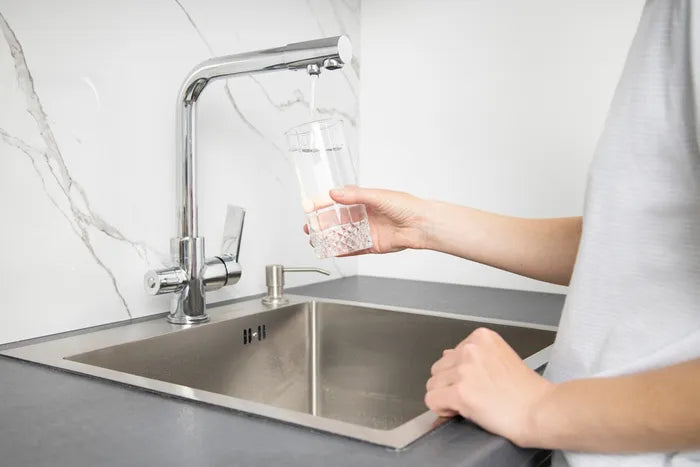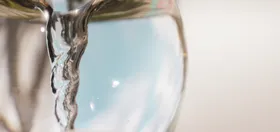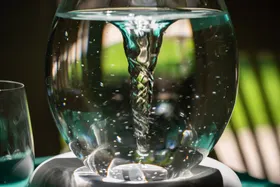What is Aerated Water?
Published January 15, 2025

Why is aeration and vortexing beneficial for your hydration? Throughout this post we'll explore three core aspects of aerated water.
Water. Life is impossible without it. As humans, who are primarily composed of water, drinking high-quality water is probably one of the most important things we can do to ensure our overall wellness.
So why would you want to aerate/swirl your water? In a moment, we'll talk about it more in depth, but here's the bottom line: vortexing affects the physical and chemical characteristics of water as well as taste, odor, texture, and quality.
Let's dive right in and find out why and how.
1. Aeration
Hmm, Aeration is what, exactly? It is the process of bringing water and air into close contact, allowing it to absorb atmospheric oxygen and release volatile compounds.
There are various methods to achieve aerated water, such as bobbles, falls, sprinkling, propeller, and vortex. The last, also known as swirling, is how nature constantly perfects water through its movements on and above the earth.
So, how does it work? The swirling motion introduces atmospheric air into the water, allowing fresh oxygen to dissolve within it. The interface of water and air allows for maximal gas exchange and air circulation, which also helps evaporate and remove dissolved toxic gases and volatile organic compounds (VOCs) like chlorine, THMs, and CO2, as well as unwanted odors.
A transfer between gas and water takes place on the surface as oxygen is introduced. Simultaneously, undesirable compounds are released and evaporate. The dissolved release of CO2 triggers a chemical chain reaction, and through this process, pH levels in the water are elevated.
The swirling motion causes the aqueous CO2 (carbon dioxide) to becomes gas CO2 and leaves the water: CO2 (aq)->CO2 (gas)
Carbonic acid (H2CO3) in the water then creates CO2 according to this reaction: H2CO3 ->CO2 + H2O
Bicarbonate (HCO3–) in the water creates carbonic acid (H2CO3) according to this: HCO3– + H+->H2CO3
The net result: H+ (an acid) is consumed, pH levels go up, and the water is as pure, sweet, and tasty as nature intended.
Photo by Nicholas Teoh on Unsplash
2. The Physical Level: Living Water.
Let’s talk about Biomimicry. Biomimicry is the premise that earth's natural mechanisms provide the most efficient and elegant methods for life to thrive. In other words, mimicking the intelligence of nature is the best and most effective way to provide sustainable and optimal solutions.
Nature Of Water - From The Vast Oceans To The Tiniest Single Droplet
When you think about it, all water in nature performs according to the same principle. While flowing naturally, water always flows to its unique spiral motion. This is true of above ground and subterranean water, rivers, lakes, and waterfalls - from the vast seas to the tiniest single droplet. Water does not flow along the shortest possible path (straight line) — it spirals its way along the path of least resistance. Every flowing body of water, large and small, has the same equation and pattern of water movement.
An illustration by Viktor Schauberger (*4)
Modern water infrastructures, on the other hand, are characterized by stagnancy, such as plastic water bottles, or forced straight lines devoid of oxygen, as in standard pipes. Bottom line, both trappings of the water industry bring us unnatural, broken, or maybe we should say “traumatized” water, as opposed to its natural motion.
Let it flow.
To fix this, water should be allowed to move in its natural way. The flowing motion aerates and restructures the water - enhancing and preserving the freshness of living water. Fresh oxygen is vital for water quality and the quality of the life it sustains. In the absence of pollution, stagnant storage, piping, and other toxic human influences, natural water is clean, pristine, delicious and nourishing.
3. Taste - Swirled Water Tastes - and Feels - Better.
The two processes described above enhance the water and return it to its equilibrium state — that is, saturated with oxygen, pH balanced, rejuvenated and revitalized(*5).
In double-blind taste tests, 87% of subjects in our experiment perceived a clear, unmistakably improved, and sweet taste when compared to average water. Interestingly, child samplers were particularly perceptive to the differences in water quality.
Other studies(*6) have confirmed that aerated water is indeed sweeter and more delicious. Aeration noticeably improves water’s taste, odor, and overall quality, as Mayu’s drinkers have stated over and over again.
Did you know?
Aeration is a well-known water treatment method for introducing Oxygen and removing hazardous chemicals(*1); it has been in widespread use since the mid-1970s. The practice continues today as a standard procedure for water purification and cleaning.
In Holland, for example, municipal water is aerated before reaching the end consumer. the World Health Organization recommends shaking and swirling the water stored in barrels after a serious water crisis for safety purposes(*2).
----
Like fire, water behaving naturally and elementally has mesmerized humans since the dawn of time. We recognize something in both water and fire that brings us back to the essential materials of life itself; water carries a profound impact on the human body and soul alike. We are, after all, mostly composed of water ourselves, and drinking is a human commonality shared by all races and cultures around the world.
When water is elevated to its original and optimum state, it enhances the entire drinking experience. It's time to get back to that state.
Give it a try
--------------------------------------------
References:
- “Water aeration has been used in water treatment for improving odor and taste, oxidation of iron and manganese, and removing carcinogenic and hazardous chemicals from water. These chemicals include volatile organics such as trihalomethanes, radon, trichloroethylene, tetrachloroethylene, trichloroethane, chloroform, and toluene. As a result, water aeration may be the single most important water treatment process used in the 21st century.” Taricska, J. R., Wang, L. K., Hung, Y.-T., Li, K. H., Huang, J.-C., Shang, C., … Scovazzo, P. (2006). Advanced Physicochemical Treatment Processes. https://doi.org/10.1007/978-1-59745-029-4
- https://www.who.int/water_sanitation_health/publications/2011/WHO_TN_05_Emergency_treatment_of_drinking_water_at_the_point_of_use.pdf?ua=1
- https://climatekids.nasa.gov/water-cycle/
- Illustration by Viktor Schauberger - Source
- “Aeration of water has been practiced since ancient times and was believed to improve water quality by "sweetening" and "softening" it (Baker, 1948). It was later discovered that aeration indeed oxygenated anaerobic waters and that such a process would oxidize and precipitate reduced iron, manganese and sulfur, as well as strip volatile organic compounds, taste and odor compounds, and radon” Managing Water in the Home: Accelerated Health Gains from Improved Water, World Health Organization Geneva 2002
- https://www.isws.illinois.edu/pubdoc/C/ISWSC-127.pdf












